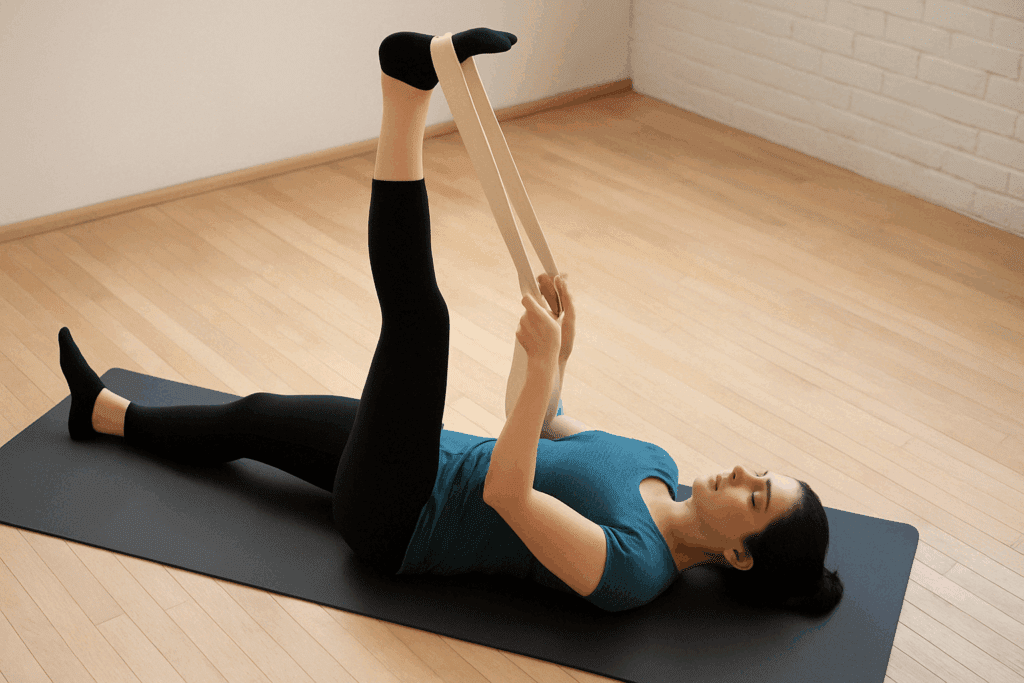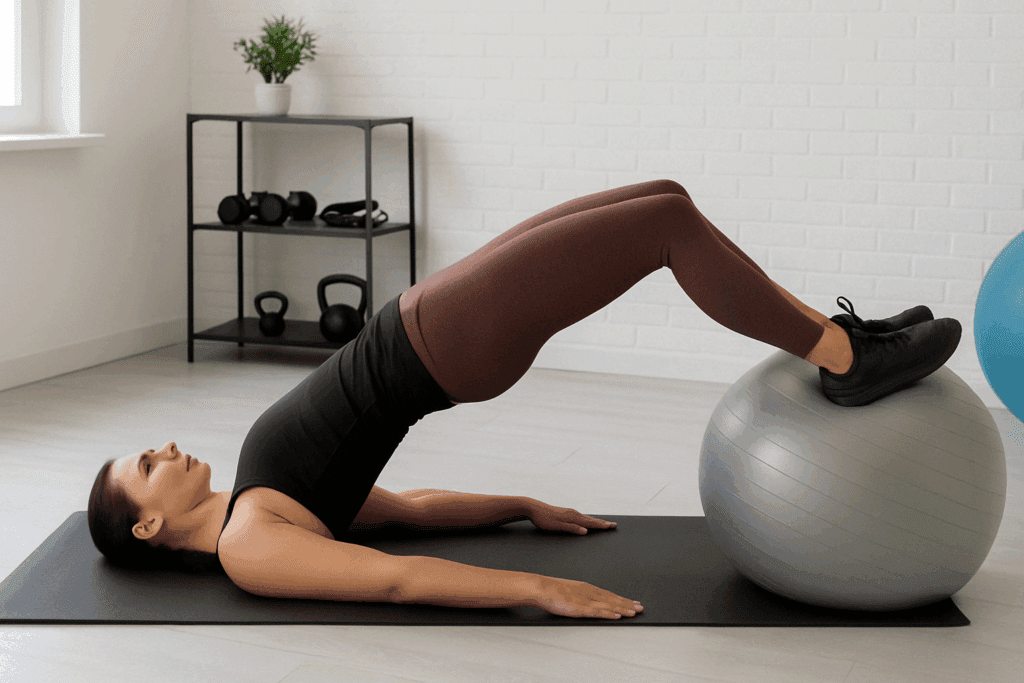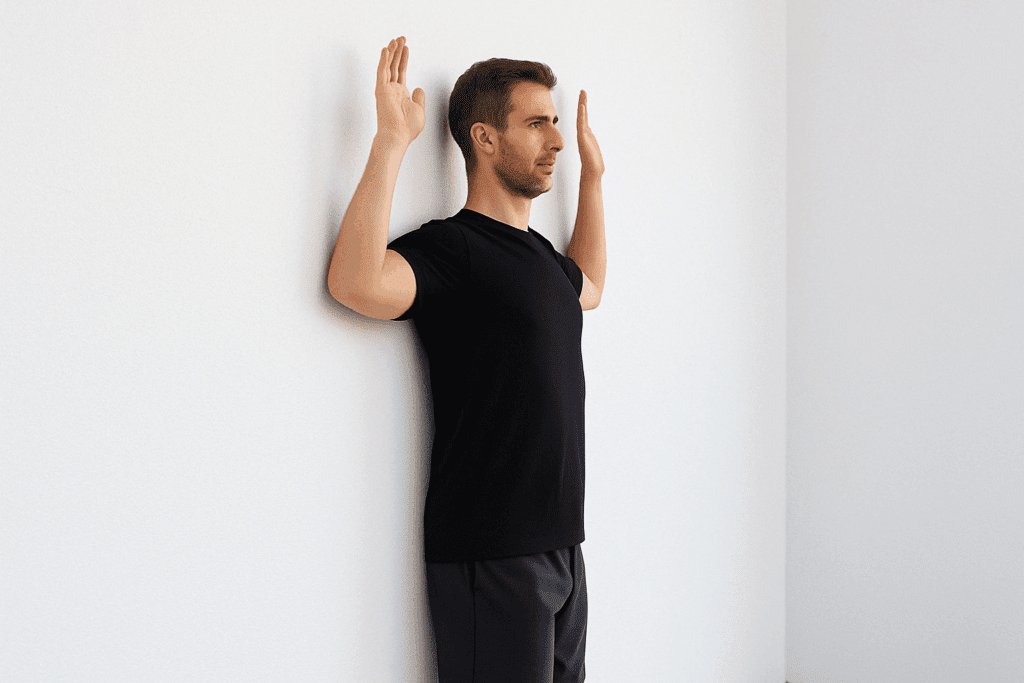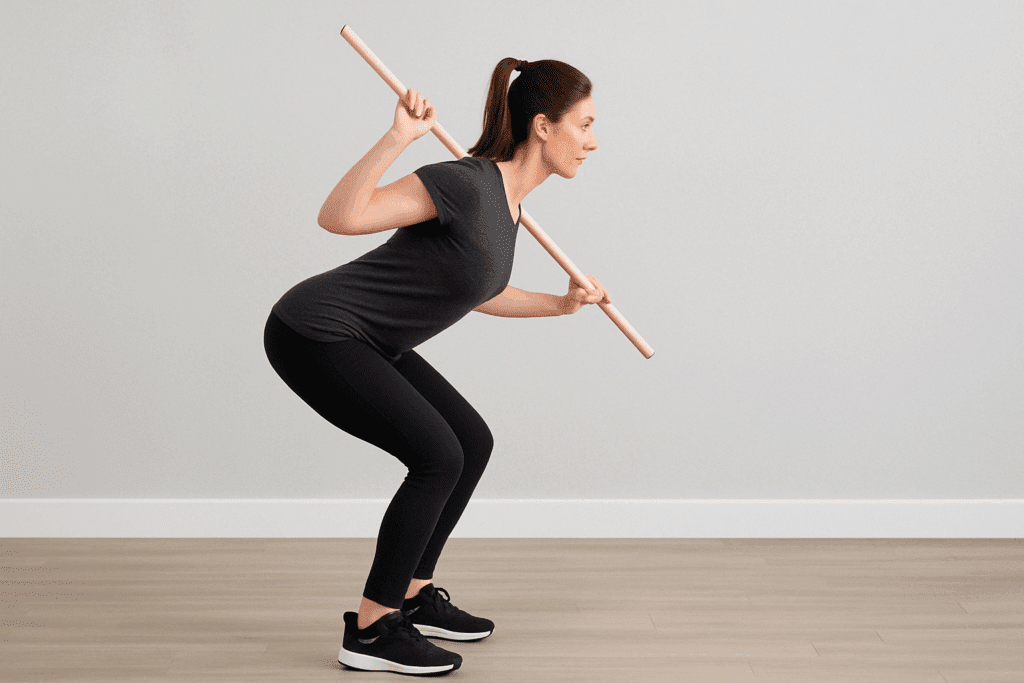A Comprehensive Guide to Back Pain Relief Through Movement
Back pain is one of the most prevalent health concerns in the world, affecting people across all age groups and activity levels. Whether it’s a dull ache after a long day at the desk or a sharp twinge during a morning jog, back pain can significantly hinder daily function and quality of life. Fortunately, one of the most effective and sustainable solutions doesn’t lie in medication or invasive procedures but in intentional movement. Expert-approved back pain workouts, when properly executed, can reduce discomfort, restore range of motion, and strengthen the supporting muscles of the spine. This article offers in-depth guidance on 15 of the best exercises, complete with back pain workout images and expert tips to help you perform each move safely and effectively.
You may also like : Best Stretches for Sore Legs and Tight Thigh Muscles: How to Relieve Upper Leg Pain Safely and Naturally
Why Movement Matters: The Science Behind Back Pain and Exercise
When back pain strikes, the instinct for many is to rest and avoid movement. While short-term rest might offer temporary relief, long periods of inactivity can actually exacerbate the issue. Muscles that support the spine—particularly the core, glutes, and hip stabilizers—can weaken and become less effective at protecting the lower back. Movement, when guided by clinical principles of physical therapy and biomechanics, has been shown to improve spinal mobility, reduce inflammation, and retrain posture and gait mechanics.
Exercises that focus on gentle stretching and strategic strengthening help in decompressing the spine, enhancing circulation to the lower back region, and promoting neuromuscular coordination. Importantly, the effectiveness of these workouts is not just anecdotal; a substantial body of research supports the role of movement in managing both acute and chronic back pain. And when these exercises are visually demonstrated through detailed back pain exercise images, users are more likely to perform them correctly, reducing the risk of injury and maximizing the benefits.
Exploring the Root Causes of Back Pain and How Tailored Exercise Interventions Work
While back pain is often perceived as a simple mechanical issue, the underlying causes can be complex and multifactorial. Addressing it effectively requires an understanding that goes beyond symptomatic relief. Mechanical back pain, which originates from muscular imbalances or poor biomechanics, is only one piece of the puzzle. Other contributing factors include myofascial trigger points, joint dysfunction, neurological irritation, and psychosocial influences such as stress and anxiety.
For this reason, any back pain workout program should begin with an individualized assessment, ideally conducted by a physical therapist or spine health expert. Movement-based interventions are most successful when they address the unique muscular imbalances, postural faults, and lifestyle patterns of the person experiencing pain. Exercises should not be prescribed in isolation but as part of a comprehensive strategy that may also include ergonomic corrections, postural retraining, and neuromuscular re-education.

Cat-Cow Stretch for Spinal Flexibility and Postural Awareness
The Cat-Cow stretch is a staple in both yoga and rehabilitative practices for its ability to mobilize the entire spine through controlled movement. As you alternate between arching and rounding your back, the spine moves through flexion and extension, which helps increase awareness of spinal positioning. It encourages gentle engagement of the core muscles while also improving breathing mechanics, as each movement pairs naturally with inhalation and exhalation. This stretch is especially beneficial in the morning or after extended periods of sitting, helping to alleviate stiffness.
Back pain workout images of the Cat-Cow stretch clearly show the progression from the Cow position (anterior tilt with lifted chest) to the Cat position (posterior tilt with rounded back), ensuring users can follow the flow safely.
Child’s Pose for Lower Back Decompression
A foundational yoga posture, Child’s Pose is both restorative and therapeutic for the lower back. This pose gently stretches the lumbar spine and promotes a sense of relaxation and grounding. When knees are spread wide and arms extended forward, the back muscles lengthen passively. It’s an excellent way to counteract spinal compression caused by poor posture or prolonged sitting.
Practicing with back pain exercise images can help users find the proper depth and alignment in Child’s Pose, ensuring the tailbone releases back without overextension in the lumbar curve. Modifications using a bolster or cushion under the torso can enhance comfort for those with limited flexibility.

Supine Hamstring Stretch for Pelvic Stability
Tight hamstrings are a common contributor to lower back pain because they limit pelvic mobility and strain the lumbar spine during forward movements. The supine hamstring stretch, performed lying down, allows for targeted lengthening of the hamstring muscles without stressing the spine. Using a yoga strap or towel around the foot enhances control and prevents compensatory movements.
Back pain workout images of this stretch highlight proper hip alignment and avoid the common error of lifting the opposite leg or arching the lower back. This gentle, passive stretch can improve hip-pelvic alignment, reducing lower back tension.
How Breathing Patterns Influence Spinal Support and Pain Management
Breathing is more than just a passive activity; it is integral to spinal support. Dysfunctional breathing patterns—such as chest breathing or breath holding—can increase spinal compression, elevate sympathetic nervous system activity, and reduce oxygen delivery to muscles. In contrast, diaphragmatic breathing activates the diaphragm as both a respiratory and postural muscle, coordinating with the pelvic floor and deep abdominals to stabilize the lumbar spine.
When incorporated into back pain exercise routines, breathwork enhances the body’s natural bracing mechanism. A simple way to integrate this concept is by instructing clients to inhale deeply through the nose to expand the ribcage laterally and exhale slowly through pursed lips while gently engaging the lower abdominals. Including this kind of breathing instruction alongside back pain exercise images empowers users to internalize proper mechanics during each repetition.

Fascial Connectivity: How Global Movement Chains Affect Local Back Pain
Fascia is the connective tissue that weaves through every muscle, bone, and organ in the body, forming functional kinetic chains. For example, the superficial back line connects the plantar fascia of the foot to the scalp through the calves, hamstrings, erector spinae, and suboccipitals. Tightness or restriction anywhere along this chain can create compensatory stress on the lower back.
Global movement patterns—such as dynamic mobility drills and full-body functional movements—can help restore fascial glide and elasticity. Exercises like inchworms, deep squats, and thoracic spine rotations not only mobilize multiple joints but also enhance proprioceptive awareness. These movements should be performed slowly and deliberately, with attention to posture and alignment. When combined with visual back pain workout images, these exercises help individuals develop a sense of body mapping and kinetic flow.
Reprogramming Postural Habits with Movement Breaks and Ergonomic Changes
Even the most well-designed back pain workouts can’t offset 10 hours of slumped sitting without movement. Habitual postures influence how the body loads its joints and muscles throughout the day. Prolonged spinal flexion or forward head posture can desensitize the postural stabilizers and increase load on the intervertebral discs.
Incorporating hourly movement breaks—such as standing extensions, wall slides, or scapular retractions—can help reset posture and relieve accumulated tension. In parallel, ergonomic adjustments such as elevating screen height, supporting the lumbar curve with a cushion, or adjusting seat depth can reinforce the effects of back pain workouts. Over time, these micro-adjustments support neuromuscular retraining, which is essential for sustained pain reduction.
Back Pain Prevention Through Cross-Training and Functional Strength
Once back pain has subsided, it’s important not to return immediately to prior movement habits or training loads. The post-rehabilitation phase should focus on integrating cross-training modalities that build resilience and maintain spinal integrity. Swimming, Pilates, strength training, and even recreational activities like hiking can provide cardiovascular and musculoskeletal benefits without excessive spinal loading.
Functional strength training—with an emphasis on proper mechanics—helps build a stronger kinetic chain. Movements like farmer’s carries, kettlebell deadlifts, and single-leg RDLs reinforce the principles learned during rehabilitation while preparing the body for real-life demands. Incorporating visual feedback through mirrors, coaching apps, or back pain workout images improves motor learning and form consistency.

Bridge Pose to Strengthen Glutes and Core
Bridge Pose is not just a stretch; it’s an active engagement drill for the glutes, hamstrings, and lower back muscles. When performed mindfully, it builds strength in the posterior chain—essential for supporting lumbar stability. The upward lift of the pelvis also offers a counterbalance to the forward flexion often seen in sitting-based postures.
Expert-recommended back pain exercise images for the Bridge Pose often emphasize keeping the knees aligned over the ankles, engaging the glutes without overarching the back, and maintaining a neutral neck position. Variations, such as adding a stability ball, can increase difficulty while enhancing proprioception.
Pelvic Tilts to Retrain Core Activation
Pelvic tilts are a subtle but powerful movement that teaches awareness of the lumbopelvic region. By engaging the deep core muscles—including the transversus abdominis and pelvic floor—this exercise helps restore spinal alignment and reduces excessive lumbar lordosis. It also enhances the body’s ability to stabilize during everyday movements.
Back pain workout images demonstrate how to flatten the lower back against the floor by tilting the pelvis posteriorly and then releasing to a neutral spine. This foundational movement is ideal for beginners and can be progressed into more dynamic core work.
Knees-to-Chest Stretch for Spinal Elongation
The knees-to-chest stretch is a gentle spinal decompression exercise that alleviates tension in the lower back and sacroiliac joints. Drawing one or both knees toward the chest reduces pressure on the lumbar discs and can provide immediate relief for muscular tightness or mild discogenic discomfort.
Correct alignment shown in back pain exercise images includes relaxed shoulders, a neutral cervical spine, and minimal tension in the hip flexors. Practicing deep diaphragmatic breathing while holding the stretch enhances its calming and pain-relieving effects.
Seated Forward Fold for Back and Leg Flexibility
The seated forward fold targets the entire posterior chain, including the lower back, hamstrings, and calves. It’s particularly useful for those whose back pain stems from limited flexibility. The emphasis should be on hinging at the hips rather than rounding the spine, which protects the lumbar discs and maximizes the stretch’s effectiveness.
In back pain workout images, the pose is often shown with the knees slightly bent and the hands reaching toward the shins or feet, depending on flexibility. Using a strap or folding a blanket under the hips can make this pose more accessible for beginners.

Bird Dog for Core Stability and Balance
The Bird Dog is a dynamic core stability exercise that engages both the deep and superficial spinal stabilizers. By extending opposite limbs while maintaining a neutral spine, it challenges the body’s ability to resist rotation and shear forces on the lumbar region. It’s one of the most research-backed exercises for enhancing trunk control and proprioception.
Effective back pain exercise images illustrate key alignment cues: flat back, square hips, and an extended arm and leg in a straight line. Beginners may start by moving only one limb at a time until balance improves.
Cobra Stretch for Gentle Spinal Extension
For individuals experiencing pain due to prolonged forward flexion or disc issues, the Cobra Stretch offers a gentle way to reintroduce lumbar extension. It targets the spinal erectors and promotes the natural curve of the lower back. The degree of lift should be based on comfort—it’s essential to avoid pushing through sharp pain.
In back pain workout images, the hands are shown directly under the shoulders, with elbows slightly bent and shoulders relaxed. Modified versions involve resting on the forearms instead of the hands to reduce spinal loading.

Wall Angels to Improve Postural Awareness
Postural correction is vital for sustainable back pain relief. Wall Angels strengthen the scapular stabilizers, promote thoracic extension, and counteract the rounded shoulders often associated with forward head posture. This exercise is particularly useful for desk workers or those who spend significant time on screens.
Proper form, as seen in back pain exercise images, includes maintaining contact with the wall at the head, mid-back, and hips, while slowly raising and lowering the arms in a controlled arc. It’s more challenging than it looks but incredibly effective for retraining upright posture.

Standing Hip Hinge for Movement Pattern Retraining
Many cases of back pain arise from dysfunctional bending mechanics. The standing hip hinge teaches the body how to hinge at the hips while keeping the spine in neutral. This movement is foundational to lifting mechanics and should precede strength training or everyday tasks like picking up objects.
Back pain workout images emphasize a flat back, soft knees, and engaged core. Mirrors or dowels along the spine can help with feedback. Mastering this move reduces strain on the lower back during both workouts and daily life.
Spinal Twist for Thoracic Mobility
A healthy spine needs rotation as much as it needs flexion and extension. The supine spinal twist gently mobilizes the thoracic spine while also releasing tension in the paraspinal muscles. It should be done mindfully, with control and without forcing range of motion.
Back pain exercise images help show the ideal leg position and shoulder placement, ensuring the twist comes from the spine and not just the hips. This is a relaxing and effective end-of-day movement.
Piriformis Stretch to Relieve Sciatic-Like Symptoms
Tightness in the piriformis muscle can compress the sciatic nerve, mimicking sciatica. This deep hip stretch targets that area and can help relieve radiating pain down the leg. The supine figure-four variation is a safe starting point that avoids over-stressing the lumbar spine.
Clear back pain workout images assist in guiding users to keep their spine flat and hips squared. The stretch can be intensified by gently pressing the elevated knee away from the chest.
Modified Side Plank for Lateral Core Strength
While full side planks can be too challenging for beginners or those with acute pain, modified versions on the knees offer a powerful way to strengthen the obliques and quadratus lumborum. These muscles support the spine laterally and help reduce asymmetrical loading.
Back pain exercise images depict elbow positioning directly under the shoulder and a straight line from the head to the knees. Breathing steadily and avoiding shoulder collapse are key to executing this move safely.
Chair-Based Spinal Rolls for Gentle Mobilization
Not everyone with back pain is ready to get down on the floor. Chair-based spinal rolls provide a seated option for mobilizing the spine through gentle flexion and extension. This movement promotes fluidity in the vertebral segments and can be especially beneficial for older adults.
Back pain workout images show a seated position with feet grounded and arms resting on thighs. Slowly rounding and arching the back in rhythm with breath can restore mobility and reduce pain over time.
Frequently Asked Questions (FAQ)
1. Can I safely perform back pain exercises every day?
Yes, you can typically perform back pain exercises daily, provided you follow proper form and technique. Daily exercises enhance muscle strength, flexibility, and endurance, contributing to quicker relief and long-term resilience against recurring pain. However, it’s important to rotate exercises regularly and use visual aids such as back pain workout images or back pain exercise images to confirm correct alignment. Consulting with a fitness expert or physiotherapist periodically can ensure your routine remains safe and effective. Always listen to your body, reducing intensity if discomfort persists.
2. Do I need special equipment for at-home back pain workouts?
You don’t necessarily need specialized equipment; many effective exercises use just your body weight or common household items. To diversify your workouts, consider adding resistance bands, stability balls, or yoga mats, which are both affordable and versatile. Using back pain workout images as a reference can guide you through correct equipment usage. Remember, consistency and proper form are far more important than sophisticated equipment. Investing in minimal gear, guided by detailed back pain exercise images, can enhance your results and prevent injury.
3. What psychological factors contribute to chronic back pain?
Psychological stressors, such as anxiety and depression, can significantly amplify chronic back pain. Stress often results in increased muscle tension and heightened sensitivity to pain, creating a vicious cycle. Incorporating mindfulness techniques, alongside regular exercise demonstrated in back pain workout images, can help break this cycle by lowering stress-induced muscle tension. Cognitive-behavioral therapy (CBT) may also offer substantial relief by addressing the underlying emotional and psychological components of pain. Balancing physical rehabilitation with psychological support can lead to more sustainable long-term outcomes.
4. Are group exercise classes beneficial for managing back pain?
Group exercise classes, especially those focusing on yoga, Pilates, or functional movement, can be highly beneficial. Such environments foster accountability and motivation through social interaction. Instructors often utilize detailed back pain exercise images to ensure participants practice correct postures safely. Additionally, group settings provide psychological benefits, reducing feelings of isolation associated with chronic pain. If choosing group classes, ensure they are led by certified professionals experienced in back pain management.
5. Can dietary changes impact back pain recovery?
Yes, dietary changes can significantly influence your recovery from back pain. Anti-inflammatory foods like fatty fish, leafy greens, and nuts can help manage inflammation, a common source of chronic pain. Maintaining a balanced diet rich in vitamins and minerals supports muscle and joint health, enhancing the effectiveness of your exercises, as demonstrated in various back pain workout images. Hydration also plays a crucial role in maintaining muscle elasticity and reducing muscle spasms. Combining dietary improvements with visual-guided exercises can optimize your recovery journey.
6. How can older adults safely start a back pain workout routine?
Older adults should begin with low-impact exercises such as gentle stretching, chair yoga, or water aerobics. Using clearly illustrated back pain exercise images can assist in proper form and help reduce injury risks. Gradually increasing exercise intensity under supervision ensures safety and effectiveness. Consulting healthcare providers before starting new routines is also crucial for older individuals. Pairing guided visuals with professional supervision promotes safe, steady progress.
7. What innovations in fitness technology are aiding back pain management?
Emerging fitness technologies, such as virtual reality (VR) exercise programs and AI-driven posture-correcting wearables, offer new dimensions in managing back pain. These tools provide real-time feedback, enhancing accuracy beyond traditional back pain workout images or static illustrations. Wearable devices that track posture and movement quality can alert users immediately if incorrect alignment occurs. Such innovations, paired with traditional exercise guidance methods like back pain exercise images, create comprehensive, individualized support. The intersection of technology and fitness continues to evolve, promising even more personalized pain management strategies.
8. How important is posture correction in relieving chronic back pain?
Posture correction is fundamental to reducing chronic back pain, as poor posture places excessive stress on spinal structures. Regular practice of targeted exercises, guided by reliable back pain workout images, promotes natural posture improvements. Moreover, posture-correcting techniques like ergonomic adjustments in workspaces and daily routines significantly contribute to lasting pain relief. Reinforcing proper posture through daily habits can amplify benefits gained from structured exercise routines. Professional evaluation and personalized posture exercises can further enhance long-term relief.
9. Can mental visualization techniques improve the effectiveness of back pain exercises? Absolutely. Mental visualization enhances the mind-body connection, allowing greater precision during exercises shown in back pain exercise images. Athletes frequently use visualization to improve performance, and similarly, those managing chronic pain can leverage this method to foster muscle relaxation and pain reduction. Visualization can reinforce correct exercise techniques and encourage consistent exercise participation. Combining mental imagery with clear back pain workout images optimizes overall rehabilitation efforts. Practicing visualization regularly can thus support physical recovery and psychological resilience.
10. When should I consult a professional for back pain that persists despite exercise?
Consulting a professional becomes essential if your back pain remains constant or worsens after several weeks of consistent home exercises guided by accurate back pain workout images. Ongoing pain might indicate underlying issues like disc herniation, sciatica, or arthritis, which require targeted medical interventions. A specialist can perform diagnostic tests and develop tailored rehabilitation programs, often supplementing self-managed exercise routines with clinical treatment options. Early consultation with professionals can prevent chronic conditions from escalating and ensure your exercises are appropriately matched to your specific needs. Regular professional oversight can complement the safe practices illustrated in back pain exercise images, ultimately improving your recovery trajectory.
Conclusion : Visualizing Recovery Through Targeted Back Pain Workouts
Back pain doesn’t have to be a life sentence. With the right guidance and consistency, movement becomes medicine. These 15 expert-approved exercises, accompanied by clear back pain workout images, offer a powerful toolkit for anyone looking to stretch, strengthen, and relieve discomfort in a safe, evidence-based manner. The incorporation of back pain exercise images not only enhances user confidence but also reduces the risk of injury from improper form. When used regularly and mindfully, these workouts provide more than just pain relief—they offer a pathway to long-term spinal health, improved posture, and restored function.
Whether you’re dealing with a flare-up, recovering from an injury, or aiming to prevent future issues, these exercises are your first line of defense. Remember, consistency is key, and visual learning can be a game-changer in your recovery journey. So, study the form, breathe through each motion, and let your body guide you toward a stronger, more resilient back.
Was this article helpful? Don’t let it stop with you. Share it right now with someone who needs to see it—whether it’s a friend, a colleague, or your whole network. And if staying ahead on this topic matters to you, subscribe to this publication for the most up-to-date information. You’ll get the latest insights delivered straight to you—no searching, no missing out.


